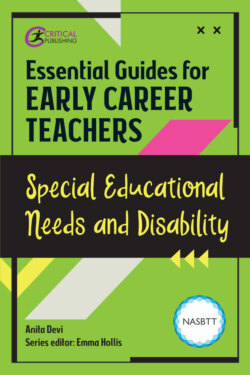Читать книгу Essential Guides for Early Career Teachers: Special Educational Needs and Disability - Anita Devi - Страница 8
На сайте Литреса книга снята с продажи.
ОглавлениеForeword
As a passionate advocate of high-quality teacher education and continuing professional development, it has always been a source of frustration for me that beyond the ITT year, access to high-quality, structured ongoing professional development has always been something of a lottery for teachers. Access and support have been patchy, with some schools and local authorities offering fantastic opportunities for teachers throughout their careers while in other locations, CPD has been given lip service at best and, at worst, is non-existent.
This series was conceived to attempt to close some of those gaps and to offer accessible professional learning to busy teachers in the early stages of their careers. It was therefore a moment of genuine pleasure when proposals for an entitlement for all early career teachers to receive a package of support, guidance and education landed on my desk. There is now a genuine opportunity for school communities to work together to offer the very best early career development for our most precious of resources – the teachers in our schools.
The aim of this series is to distil some of the key topics which occupy the thoughts of early career teachers into digestible, informative texts which promote discussion, contemplation and reflection and will spark further exploration into practice. In each edition, you will find a series of practical suggestions for how you can put the ‘big idea’ in each chapter into practice – now, next week and in the long term. By offering opportunities to bring the learning into the classroom in a very concrete way, we hope to help embed many of the principles we share into day-to-day teaching.
When NQTs are asked about how well they feel prepared for the realities of the classroom, time and time again the same theme emerges. Almost all NQTs report wishing they could feel more secure in teaching children with SEND. In so many ways, this is entirely unsurprising. If you were to ask a teacher five or ten years into the profession, or even a teacher about to retire, where they felt most vulnerable in their practice, you might expect a similar answer. Why? Because no two children are the same and so, quite naturally, no two children with a special educational need are the same. As Anita points out in this book, the job of learning about SEND is never done. It is a lifelong professional endeavour. What Anita does so brilliantly here is to introduce you to some key principles which will start you on this process. Every journey starts with a few small steps and this book is the perfect place to start.
I hope you enjoy exploring this book as much as I have enjoyed editing it.
Emma Hollis
Executive Director, NASBTT
